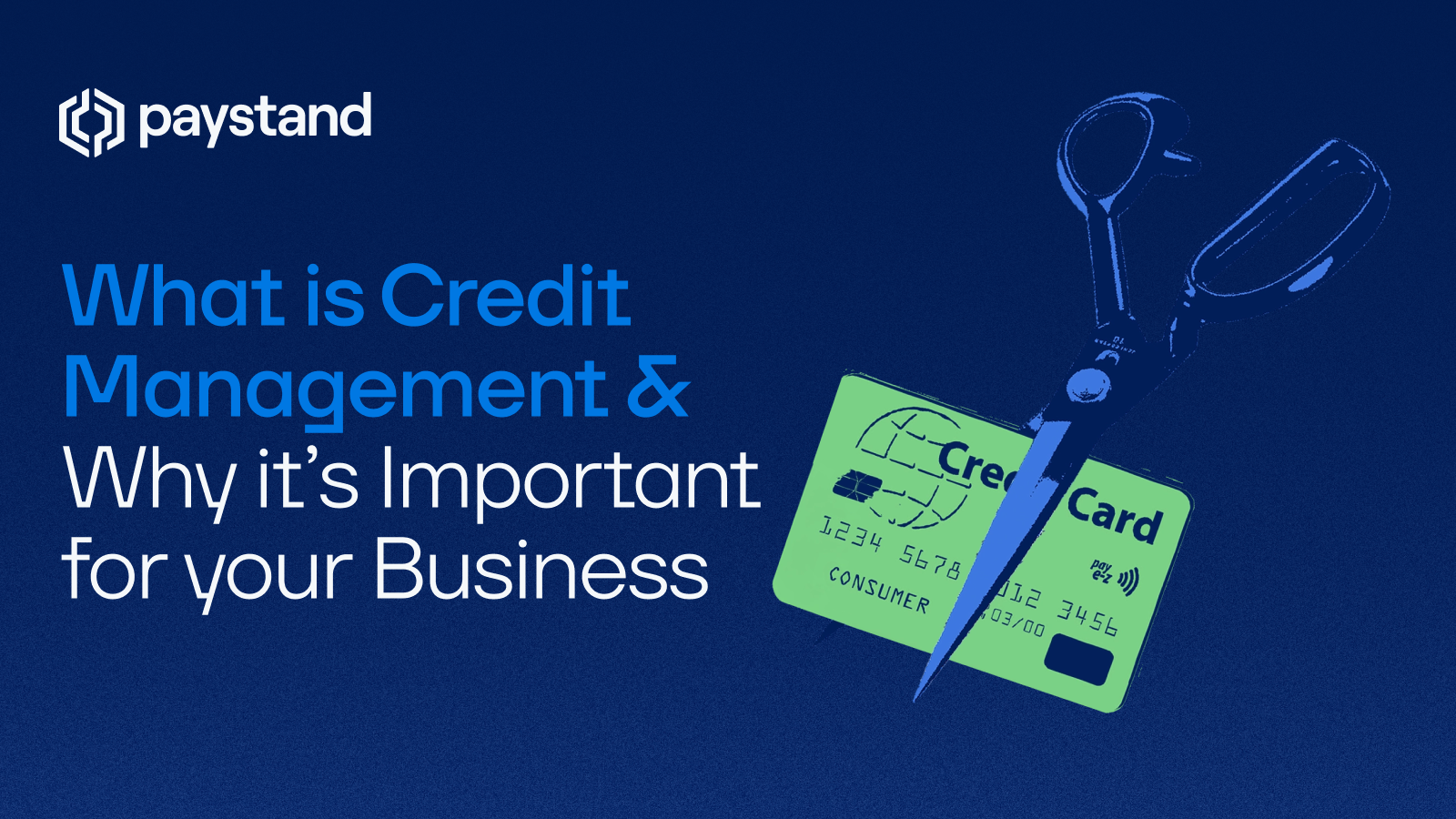What is Credit Management & Why it's Important for your Business

Table of Contents
- What is Credit Management?
- Steps in the Credit Management Process
- Key Benefits of Implementing Credit Management Solutions
- What to Look for in a Credit Management Provider
- Reducing Late Payments and Bad Debt with Credit Management
- Credit Management Strategies and Financing Options
- Tools to Streamline Accounts Receivable
Key Takeaways
- Credit management is the process of evaluating, extending, and monitoring credit to customers to protect cash flows and reduce bad debt.
- Effective strategies include setting credit limits, defining payment terms, and monitoring accounts receivable to reduce late payments.
- Implementing a credit management system can help businesses lower days sales outstanding (DSO) and improve cash flow.
- Strong credit management reduces the risks associated with extending credit and enhances financial health, making it easier to secure favorable financing.
- Tools like automated invoicing, payment processing, and analytics dashboards streamline the credit management process and support better customer relationships.
For businesses, extending credit to customers can be a double-edged sword. On one hand, it helps build long-term relationships and increases sales. On the other, it introduces risks associated with extending credit, such as late payments, bad debt, and weakened financial health. This is where credit management becomes crucial.
In simple terms, credit management is the process of evaluating, monitoring, and controlling credit risk to protect cash flows and improve cash flow stability. By implementing effective strategies, businesses can minimize risks, accelerate customer payments, and strengthen overall financial performance.
What is Credit Management?
Credit management is the discipline of setting credit terms, assessing customer creditworthiness, monitoring accounts receivable, and ensuring timely collections. Effective credit management goes beyond simply approving or denying a credit application. It’s about managing the entire credit management process to maintain strong cash flows while minimizing exposure to bad debt.
For example, businesses that fail to enforce proper credit decisions may end up with customers who are unable—or unwilling—to pay on time. This leads to higher days sales outstanding (DSO) and reduced liquidity. A high DSO locks up capital that could be being used on other projects so reducing DSO is critical for companies with high DSO. On the other hand, companies that adopt a structured credit management system are better positioned to maintain financial health and long-term growth.
Steps in the Credit Management Process
An effective credit management process typically includes:
- Credit Application Review – Collecting and analyzing data from new and existing customers before deciding whether to extend credit.
- Setting Credit Limits – Establishing safe, realistic thresholds for how much credit each customer can access.
- Defining Payment Terms – Clearly stating expectations around customer payments, due dates, and penalties for late payments.
- Monitoring Accounts Receivable – Tracking outstanding invoices and identifying potential risks of default early.
- Collections and Escalation – Implementing strategies to manage late payments and recover outstanding balances efficiently.
- Ongoing Evaluation – Continuously assessing customer financial health and adjusting credit terms accordingly.
Automation plays a key role here. With the right invoice reconciliation automation tools, businesses can streamline the entire cycle from invoicing to cash collection.
What are the Key Benefits of Implementing Credit Management Solutions?
Businesses that implement modern credit management solutions often see:
- Improved Cash Flow – Shorter DSO and fewer unpaid invoices.
- Reduced Bad Debt – Early detection of risky accounts.
- Better Financial Health – Stronger balance sheets and more predictable cash flows.
- Stronger Customer Relationships – Clear payment terms build trust with existing customers.
In fact, credit management directly supports working capital optimization by ensuring cash is available when it’s needed most.
What Should I Look for When Choosing a Credit Management Provider?
When evaluating a credit management provider, look for:
- Automation Capabilities – From setting credit limits to managing accounts receivable.
- Data-Driven Credit Decisions – Access to customer financial data and credit risk analytics.
- Integration – A credit management system that works with your ERP or accounting software.
- Transparency – Clear dashboards to track payment terms, DSO, and cash flows.
- Scalability – Solutions that grow with your business.
Choosing the right provider can mean the difference between struggling with late payments and thriving with predictable revenue.
How Can Credit Management Services Help Reduce Late Payments and Bad Debt?
Late payments create a ripple effect—straining working capital, reducing liquidity, and increasing reliance on external financing. Credit management services help businesses:
- Set realistic credit terms tailored to customer risk profiles.
- Enforce timely collections with structured workflows.
- Monitor accounts receivable in real time.
- Proactively address issues before invoices turn into bad debt.
Our article on late payments explores how businesses can turn this challenge into an opportunity by implementing automated payment reminders, digital payment options, and escalation processes.
How Can Effective Credit Management Strategies Help Secure Better Financing?
Lenders and investors look closely at a company’s financial health before offering credit. Businesses with high bad debt levels or inconsistent customer payments may face unfavorable terms.
By adopting effective credit management strategies—such as lowering DSO, optimizing payment terms, and reducing reliance on risky accounts—companies present themselves as lower-risk borrowers. This, in turn, allows them to secure more favorable financing options.
Put simply, strong credit management improves the company’s reputation and provides leverage when negotiating with banks and financing institutions.
Which Credit Management Tools Can Streamline Accounts Receivable?
Modern credit management tools go beyond collections—they enhance customer experience and support better relationships. Key tools include:
- Automated Invoicing & Collections – Ensures payment terms are enforced without manual follow-ups.
- ERP-Integrated Credit Management Systems – Centralizes data for better credit decisions.
- Analytics Dashboards – Tracks trends in accounts receivable and cash flows.
- Payment Processing Solutions – Makes it easier for customers to pay, reducing friction in the payment cycle.
Credit management is not just about approving or denying requests to extend credit—it’s about building a system that supports cash flow, reduces bad debt, and strengthens financial health. From setting credit limits to automating accounts receivable, businesses that implement effective credit management are better positioned for growth.
Discover how Paystand can help you modernize your credit management system and accelerate cash flow: Accounts Receivable Solutions







%20(1)%20(1).jpg?width=100&height=100&name=IMG_3752%20(1)%20(1)%20(1).jpg)